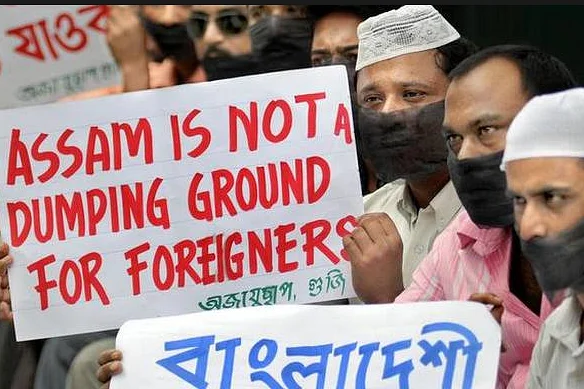Assam: 17 Bangladeshis detained for flouting visa rules, preaching religion


At least 17 Bangladeshi nationals were detained by the Assam Police on Saturday in the Biswanath area for engaging in religious activities and violating visa requirements.
According to reports, the Bangladeshi nationals have been camped out in the district’s Baghmari region near the Jinjia police station for a few days, according to Nabin Singh, the district’s superintendent of police, who spoke to IANS.
The policeman revealed that last month, Bangladeshi nationals crossed into India at the Coach Behar border in West Bengal. After that, they crossed into Assam and visited a few locations in the South Shalmara area of the state. Ashraful Alom, a religious leader from Bangladesh’s Sherpur area, served as the group’s leader.
The organization allegedly began conducting religious activities in some isolated areas in that district. However, it slipped the police’s notice, and they were earlier summoned to South Salmara’s Fakirganj Police Station.
The police have cautioned them not to continue there with their religious activities. Singh claimed that once the Bangladeshi nationals consented to the police’s demands, they informed them that they were traveling to Ajmer Sharif.
However, he continued, “after a few days they returned to Assam once more and this time they began the religious activities in the riverine districts of Baghmara in the Biswanath district.
The police officer added that the Bangladeshi group decided to target riverine sites because they are located in the district’s interior.
“Bangladeshi nationals entered India on tourist visas and were engaging in religious preaching, which is blatantly against the terms of the visa,” Singh said. Both a case against them under the Foreigners Act and the procedure to revoke their visa have been started.
For reportedly running terror modules in the state, Assam police have detained up to 40 people in recent months. Al-Qaida in India Subcontinent (AQIS) and Ansarullah Bangla Team (ABT), according to the authorities, have been attempting to grow their bases in Assam and North East India.
DISCLAIMER: The author is solely responsible for the views expressed in this article. The author carries the responsibility for citing and/or licensing of images utilized within the text.
